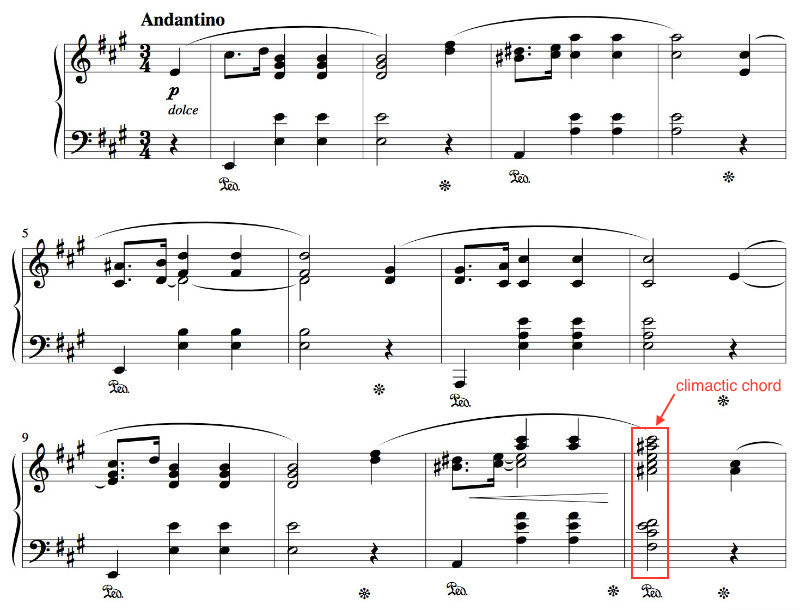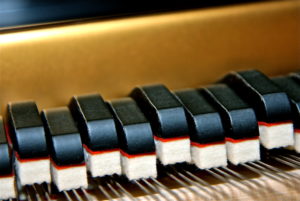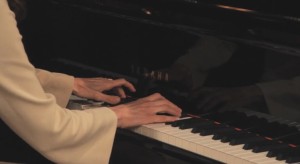While the Chopin Prelude in A Major only lasts 16 measures and takes about one minute to play, it is a wonderful study in imagination of dynamics, color, and rubato. I explore this work from multiple perspectives here, as part of GRAND PIANO PASSION™’s well-regarded Classical Piano Music Amplified™ series.
Interpretation through Tempo Rubato and Dynamics
Choose a tempo in which you can get faster and slower, as the rhythm is very consistent in the Prelude in A Major, and a good performance will need to be flexible to express each phrase fully. Decide on how the rubato will be for each of the phrases that lead to the climactic moment in measure 12. I believe each of the five phrases that precede it should be different in how the dotted rhythm and the succeeding quarters are handled.
Also consider the dynamics of each of the phrases. Decide on whether they move continuously toward the climax or whether they rise and fall as they approach it. There are opportunities to change the color of the phrases: consider how the balance can change from the melody to the accompaniment and how the chords are voiced in terms of thickness of sound.
The climactic chord is an interpretive issue as to how fast you will play the rolled notes. A faster roll will create a more dramatic moment, and a slower one a large but gentler effect, or you may reduce the chord and play it solidly.
Think back from the final measure as to how you wish the dynamics and rubato to bring the work to its end.
Technique in the Chopin Prelude in A Major
To create the diverse color effects in the Prelude in A Major, experiment with the angle of the fingers from the melody finger to the ones that play the accompaniment so that you physically find the angle of each finger that will produce the desired effect.
 As soon as you play the bass note of each phrase, move your left hand quickly into place so that you are ready to play the next notes. That way you can focus attention on just the quick preparation of the right hand as it moves from the 16th note to the next quarter. This will not only help you keep it in time, but by preparing the hand you will have more control over the sound than you would if you were moving the hand quickly. The pedal will hold everything needed.
As soon as you play the bass note of each phrase, move your left hand quickly into place so that you are ready to play the next notes. That way you can focus attention on just the quick preparation of the right hand as it moves from the 16th note to the next quarter. This will not only help you keep it in time, but by preparing the hand you will have more control over the sound than you would if you were moving the hand quickly. The pedal will hold everything needed.
For the rolled chord in measure 12, I would play the first four notes of the right hand with that hand and then cross the left hand over for the final C-sharp. I think that gives you more control over the sound of that final note. An alternative would be to leave out the bottom A-sharp in the right hand and then play the chord as a solid one, if you prefer this effect. It is up to each performer.
Recommended Performances of the Chopin Prelude in A Major
I would recommend listening to Claudio Arrau, Arthur Rubinstein, Ivo Pogorelich, and Martha Argerich for the direct simplicity but wonderful expressiveness that they all bring to their performances of the Chopin Prelude in A Major.
In the video to the left, notice how Pogorelich takes a very deliberate tempo. He really does not do much with the interpretation until he changes the dynamic to piano and creates quite a wonderful moment. His separation of the melodic line from the accompaniment gives him great control over the melody, and the simplicity with which he treats the work is quite engaging.
Argerich (on the right) takes a much faster tempo. This is one of the great things about music in that tempo—rubato and color are all open to the individual’s interpretation. She colors each phrase beautifully; and listen to how she controls her final decrescendo, bringing it to the final chord.
 look inside |
Chopin – 24 Preludes, Op. 28 Composed by Frederic Chopin (1810-1849). For piano. This edition: Spiral Bound. Published by Polonius Sheet Music (PU.135). |





Is the top video played by a Steinway artist?
I’m sorry, but if the person in the video and the author is the same person then he is not following his own tips in the article and I must say it’s a very poor example of inspiration.
Thanks for writing. Yes, Cosmo Buono, a Steinway artist, is the author of this article and also the person playing in the video. I’m curious to know, what were some of the tips that you felt he was not following in the video?
The climactic chord is definitely not a rolled chord, although that’s certainly a solution for players with trouble stretching. It’s really uncomfortable at first, but you should be able to grab it with 5-3-2-1 in the left hand and 1-1-2-4-5 in the right, with the right thumb flattened and playing both the A# and C#.
Thanks for suggesting this alternative!
RSG I have wondered for about ten years about that chord. I rolled it like the author said and sometimes I’d play the high C sharp with my right or my left hand. I always thought it was impossible which was uncomfortable for my brain. I just played it like you said about five times in a row. I can do it and I’m very excited!